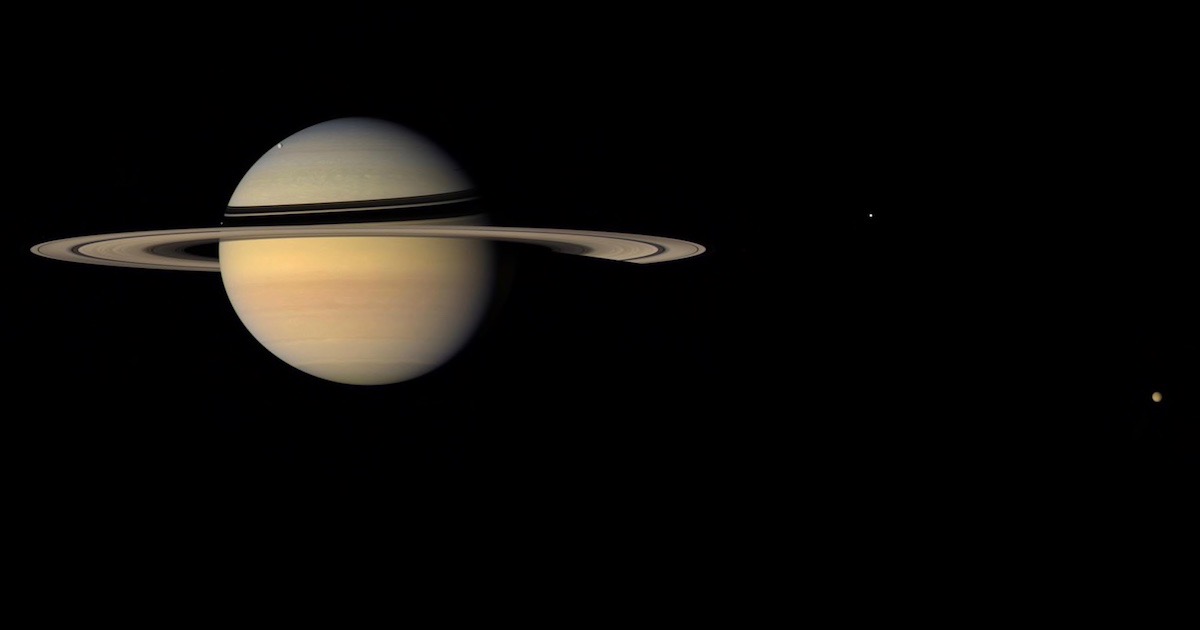 Intelligent Design
Intelligent Design
 Physics, Earth & Space
Physics, Earth & Space
Is There Information in Saturn’s Rings?

Or in a rock? Or a snowflake? This is a common contention from ID critics — that natural, physical objects like these contain information, and they require no recourse to an explanation involving intelligent design. So that means the information in DNA can be explained as the product of purely physical processes, too.
In fact I heard this point again in reviewing the Meyer-Krauss-Lamoureux debate in Toronto, referred to the other day by Evolution News. In one of the dramatic debate’s more ho-hum moments, atheist Lawrence Krauss tried to fight back against Stephen Meyer by pointing to the information in snowflakes. Was he correct to do so?
Conflating Information with Information
On a new ID the Future episode, attorney and engineer Eric Anderson talks with host and science historian Mike Keas about the challenge. They consider the example of Saturn and its rings. To describe the rings would entail a great deal of information. Right? Anderson makes the great point that design critics habitually conflate two kinds of information. There is information about a physical object — which an astronomer or astronaut could generate with his instruments and observations. And there is information contained within an object, as in DNA, or a newspaper, book, or other carefully composed or coded text.
These are different things. The information about Saturn’s rings does not exist until someone, with his intelligence and intelligently designed instruments, comes along and generates it. By contrast, the information residing in DNA was already there before anyone knew a thing about it. Good conversation. You can listen to it here.
Evolution and ID in 2001: A Space Odyssey
This makes me think of something else. I just reread the Arthur C. Clarke novel 2001: A Space Odyssey, which was written concurrently with the production of the 1968 film by Stanley Kubrick and is helpful in understanding the movie. In the novel, unlike the film, the crew of the spacecraft Discovery are headed ultimately not for Jupiter but for Saturn.
The alien monolith that is their object, on one of Saturn’s moons, makes a thought-provoking contrast with the planet’s spectacular rings. The monolith, a much larger version of the similar object uncovered on Earth’s Moon, as you’ll remember from the movie, is clearly a designed product reflecting purpose in its making. Its discovery is what sets the movie’s story going.
As soon as it’s found, everyone understands at once that it’s not a naturally occurring thing. No one thinks the same of Saturn’s rings, which in the novel are explained as the result of another one of Saturn’s moons being shattered in the process of leaving behind the large monolith. It was an accident, apparently. There is no information there.
An Instantly Grasped Distinction
The point is that, in this imaginative story, we immediately understand the difference between the designed monolith and the undesigned rings. Clarke might have appreciated Eric Anderson’s point. I highly recommend the novel, by the way, which brings out even more clearly than the movie the themes of evolution and of human versus machine intelligence (the paranoid, murderous HAL).
In fact, the whole story is about evolution and what accounts for human uniqueness. In the famous prologue common to the book and the movie, the aliens are needed to step in and program the pre-human apelike creatures, boosting them to the next stage on the road of becoming intelligent human beings. In other words, it’s a story about evolution by intelligent design. Just a novel, I understand. Interesting, though, don’t you think?
Photo credit: NASA/JPL/Space Science Institute.
